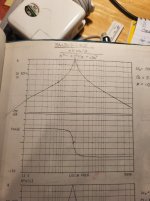I'm picking up on this thread because I have a related question.
At some point in the future, I want to build my own readout/signal conditioning unit for Talyvel clinometer heads. Ideally I'd like a SOC solution that interfaces directly to the LVDT and has the ADC and DSP stuff on a single chip. Google immediately found the TI PGA970, which costs about $16 in quantity one. Does anyone have some experience with these? At least on paper it looks promising. Description cut-and-pasted below. Cheers, Bruce
[EDIT NEXT DAY]
A couple of notes on pricing and availability. Mouser's price for the PGA970 chip is 21 Euro/USD in quantity one. This is in stock in the USA and Europe in an HTQFP-48 package - a square outline with 12 SMD pads per side, easily mountable on a 1-sided prototype-friendly PCB. The development board PGA970EVM costs 233 USD or Euro in quantity 1. This is in stock at Mouser both in the USA and Europe. Digikey does not stock either item. I also don't find either item for sale via Ebay.
Description for the PGA970
The PGA970 is a highly integrated system-on-chip LVDT sensor-signal conditioner with advanced signal-processing capabilities. It contains a three-channel, low-noise, programmable-gain, analog front end that allows direct connection to the sense element, followed by three independent 24-bit delta-sigma ADCs.
Further, the device contains a digital signal-demodulation block that interfaces to an integrated ARM-Cortex M0 MCU, allowing implementation of custom sensor-compensation algorithms stored in the device nonvolatile memory. External system communication is achieved by using any of the SPI, OWI, GPIO, or PWM digital interfaces. Analog output is supported through a 14-bit DAC and programmable-gain amplifier offering reference or absolute-voltage output. Sensing-element excitation is achieved by the use of an integrated waveform generator and waveform amplifier. The waveform signal data is user-defined and stored in a designated RAM memory area.
Besides the primary functional components, the PGA970 is equipped with additional support circuitry. The device diagnostics, sensor diagnostics, and integrated temperature sensor provide protection and information about the integrity of the overall system and sensing element. The device also includes a gate-controller circuit which when used with an external depletion MOSFET can regulate the device supply voltage in systems where the supply voltage exceeds 30 V.




